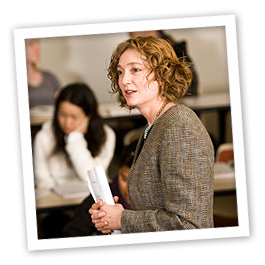What are you doing?
We have partially or completely flipped classes that we teach so that students receive course content before they come to class through readings, videos, podcasts, powerpoints, etc. Class time can then be spent answering questions, working problems, or doing activities that reinforce the concepts.
Why are you doing it?
Pushing some of the basic content delivery out of the classroom accomplishes several objectives. Students arrive at class better prepared to move past basic terms and concepts. They have the opportunity to engage with each other as they wrestle with challenging ideas together. We also have the opportunity to interact with the students individually, which gives us the chance to address the questions actually being asked—instead of general questions that student might have.
Why do you think it’s important to incorporate this practice into the classroom?
A lecture-style class is really a “one-size-fits-all” approach to learning, but our students do not all learn at the same pace. They also differ in which concepts they find difficult and which come easily to them. A flipped class allows for more individualized learning. An added benefit is that flipped classrooms help our students transition to self-directed learning, a skill that is valuable in the workplace.
Who is being impacted the most?
In a typical class some students struggle to keep up, while others are hardly challenged. A flipped classroom allows students to engage with the material at their own pace.
What hopes do you have for the future when this work is done?
As we become better at applying the flipped model our students should be able to move further into specific topics. We should also be able to customize instruction across the class population—allowing us to challenge the thinking of the stronger students while simultaneously allowing us to focus on foundational building blocks with struggling students.


